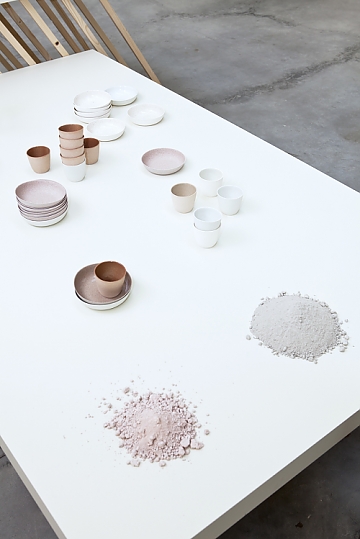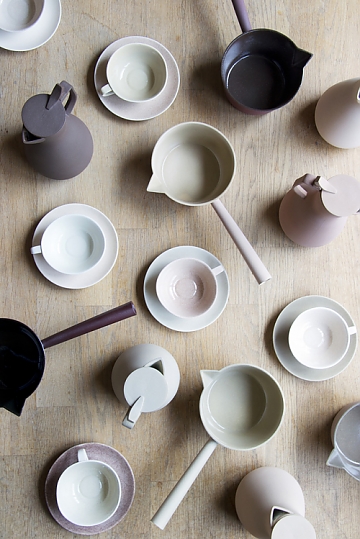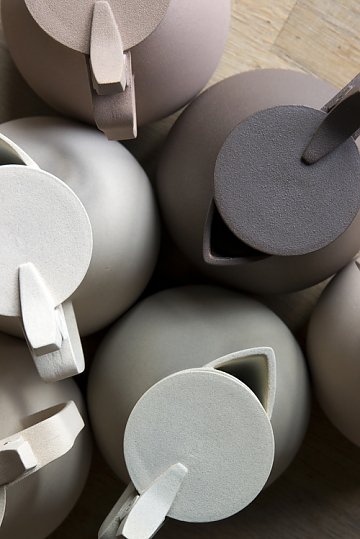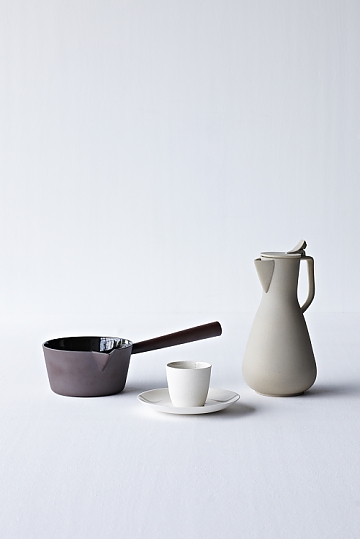Eindhoven-based Kirstie van Noort sees design as a way to communicate a certain process or the story behind a material. Her Ceramic Paint, Collection Cornwall shown below was the result of thorough research into raw materials, and the way in which they manifest themselves in stoneware, earthenware and porcelain. She travelled to Cornwall, England and discovered 12 raw materials, including tin and copper, which were made into a base material for paint, suitable for colouring the ceramics.
Ceramic Paint / Collection Cornwall
Curious to know about the origin and production of china, I spent two weeks in Cornwall in the UK. Here, large quantities of china clay are extracted every year. During my stay I also learned about other industries besides the china industry. Cornwall played an important role in the Industrial Revolution, because of its soil being very rich in ore. Until the nineties, there were dozens of mines from which copper, tin and silver was extracted. But the prices of the materials dropped, and all mines were forced to close down. The result is a landscape that has been left with the remains of the mines. Not just the buildings, but also the piles of raw materials that have been discarded by the industry make a colourful pattern in the landscape.
The three objects Bugle, Geevor and Nanpean have been named after the places where the materials were found, and reflect the three most important industries in this area, namely tin, copper and china clay. They also give an impression of the impact their respective footprints have left on the landscape. ‘Bugle’ is a jug, and refers to the original form of the tin jug, but here it’s made from china and has a coloured coating that was developed from the tin mine. Saucepan ‘Geevor’ shows the intense shine of the copper mine, and is also made from china. ‘Nanpean’ is a china cup and saucer that are coloured with the pigments extracted from the waste that was left behind from this industry.












![[Ad] A cosy stay at a Cornish eco cabin – Koto at The Point](https://i0.wp.com/catesthill.com/wp-content/uploads/2024/08/catesthill-koto-at-the-point-10.jpg?resize=150%2C150&ssl=1)
